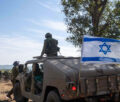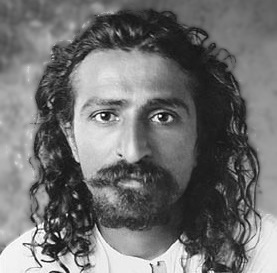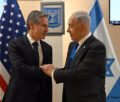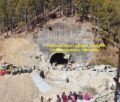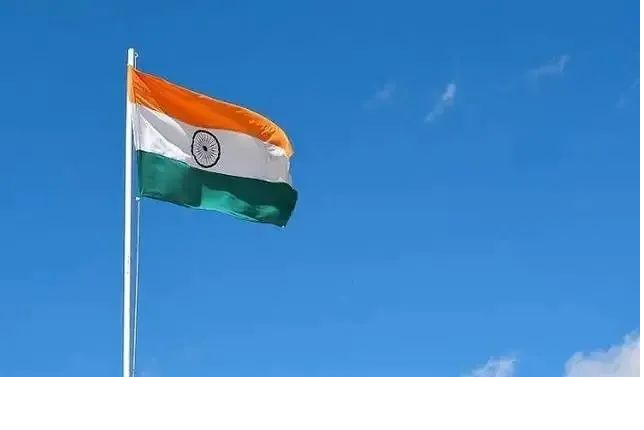Time for Indian initiative for a CBM summit with Pakistan and Afghanistan*

By Malladi Rama Rao
![]() Look at the absurdity of the situation. Delhi has not deployed its army side-by-side the NATO forces in Afghanistan. In fact, it has been resisting the American pressure to send its troops for more than a decade. Also, Prime Minister Manmohan Singh government is not helping Karzai’s army and police in any operation against Pakistan. Laying a road, building or running a hospital and connecting villages by wireless phone pose no threat. Yes, the amount involved is huge at $1.3 billion by Pakistan standards but it has brought back to India over 100 body bags and added 239 to its list of physically disabled in the past two years. Hence the question: what makes Islamabad dead set against Delhi’s role in Kabul?
Look at the absurdity of the situation. Delhi has not deployed its army side-by-side the NATO forces in Afghanistan. In fact, it has been resisting the American pressure to send its troops for more than a decade. Also, Prime Minister Manmohan Singh government is not helping Karzai’s army and police in any operation against Pakistan. Laying a road, building or running a hospital and connecting villages by wireless phone pose no threat. Yes, the amount involved is huge at $1.3 billion by Pakistan standards but it has brought back to India over 100 body bags and added 239 to its list of physically disabled in the past two years. Hence the question: what makes Islamabad dead set against Delhi’s role in Kabul?
America’s willingness to go along with Rawalpindi’s pressure and persuade Delhi to back off Kabul is understandable. President Obama badly needs immediate gains on the Afghan front and he is made to believe that only Pakistan army can deliver tactical advantages. For him, therefore, partnership with India is akin to keeping an old lady in good humour, secure in the knowledge that the hand will not go anywhere. Obama is worried about the domestic popularity rating and the elections in 2012. Not history, past and future. Any how, students of Today’s America are no good at history and mathematics; they have been merrily outsourcing their home work to Indian BPOs.
The fact of the matter is India has every reason to be disappointed with President Obama and his Af-Pak policy. There can be no turn around in the situation as long as Washington hopes to do business with the General Headquarters (GHQ) in Rawalpindi and wants its help to get out of Afghanistan in another twelve months flat. Delhi and Islamabad differ in their approaches towards and goals in Kabul.
For Pakistan, particularly its operational arm, the Inter Services Intelligence, ISI, national reconciliation in Afghanistan means political compromises by the lead players to reward it with its long cherished objective of strategic depth. Towards that goal, ISI has been sabotaging President Hamid Karzai’s moves for a breakthrough to the decade old impasse. It is also making the non-state players it has created and nurtured to target Indian assets with the sole aim of kicking up aversion in the Indian mind for a work out in Afghanistan. Earlier ISI made the Haqqani network to do its foot-work. Of late, it has turned to its very own Lashkar-e-Taiba (LeT) to do its bidding as the Haqqanis are made to done the mantle of ‘good Taliban’ for a possible berth in Kabul’s power structure.
At present about 5000 Indian Samaritans are working practically all over Afghanistan. As focus on priority areas increases, Indian man power will swell in numbers. India is the fifth largest donor nation, after the US, UK, Japan and Canada. So far it has managed to overcome the Pakistani hiccup while executing projects like Zaranj-Delaram highway and power transmission lines to Kabul at a great cost. What about the future? India’s National Security Advisor, Shiv Shankar Menon, has declared that Delhi will not scale down its presence in Afghanistan. Well, that is precisely the demand Pakistan’s ISI chief, Lt. Gen. Shuja Pasha conveyed to Afghanistan President Hamid Karzai early this year as the trade off for help in negotiations with the ‘Good’ Taliban.
One thing is clear though. As it goes about fulfilling its developmental commitments towards the Afghan people, India cannot invest on the security of its assets and at the same time allow the perception that it is running scared. It is not a zero sum game. And has its risks. The question is: Is it worth the trouble? If history is the guide, the answer to this oft asked question is a resounding yes.
From the days of the famed Silk Route and even before that to the present times, India has been closely linked to Central Asia with Afghanistan serving as a gateway for political, economic and literary interaction. Islam entered the Indus and Gangetic plains through this very gateway. And over the years, the Islam of the sub-continent has become quite distinct from the Islam practiced in the Arab world. It is ‘folk’ Islam, to quote Pakistan scholar, Nadeem F Paracha, with the enshrinement of the traditional Sufism that prevailed due to a long period of interaction between Islam and the esoteric strains of Hinduism and other faiths of India. The core of folk Islam is secularism unique to this part of the world; it defies straight jacket definitions. Where else except in the sub -continent a Benazir, a Hasina and an Indira can be seen visiting the same ‘darga’.
Probably, as true heirs of this Folk Islamist legacy, leaders of the sub-continent have never allowed geo-political- strategic trust deficit to come in the way of their personal good will towards each other even as they are at their vituperative best to the delight of headline hunters. The same trait has percolated to people on either side of the border divide. It is this goodwill that keeps drawing India and Pakistan to the negotiating table at regular intervals. At times at the initiative of Islamabad. Quite too often at Delhi’s initiative. The Shimla Agreement signed at the end of 1971 war is a shining example.
The list of such initiatives is long, indeed. Most of these efforts have borne fruit and have become bench marks for good intentions and good relations. Like the initiative that had resulted in an agreement signed on the last day of 1988. When the world was getting ready to welcome the dawn of a new year, the two countries resolved to ‘prohibit’ attacks against each other’s nuclear installations and facilities. As a sequel to the agreement, both sides resolved to exchange on the First Day of every New Year of the latitude and longitude of nuclear installations and whenever there is any change.
Neither KPS Menon, India’s foreign secretary, nor his Pakistan counter part, Humayun Khan, who had signed the agreement, thought that it would last their term or of their young prime ministers, who had strangely fallen victims to assassins’ bullets.
Yet, the South Asian nuclear rivals have been honouring the Dec 31, 1988 agreement with unfailing regularity by exchanging information about their nuclear facilities on the January 1 every year. Terrorist mayhem of the type Mumbai witnessed on November 26, 2008 or the attack on India’s temple of democracy on December 13, 2001 has not stalled or even delayed the exchanges telling thereby the two neighbours have the will to do out- of – box thinking in letter and spirit.
Other agreements that have reduced the scope for crisis like situations are no less significant. Both countries have been notifying each other since 1991 regularly of each others’ planned military exercises. And are not conducting exercises of land forces at divisional level and above within five kilometres of the border. There is also advance notification in respect of ballistic missile flight tests. As you are reading this article, Pakistan is conducting its biggest ever military exercise to validate the Kayani doctrine on protecting Eastern and Western flanks. These manoeuvres showcase the power of its air force in aid of the land operations. Yet, the traditional trust deficit is no where on display
Put differently, the leadership of India and Pakistan has the capacity to think and act out –of-box on their own. The results may not be attracting the banner headlines in the newspapers but have been rewarding enough. Interestingly, barring on a couple of occasions, like, for instance, in 1948 and 1965, there was no outside involvement in the discord between the two neighbours who became independent nations at the end of colonial rule in the sub-continent.
No American immigrant diplomat with an agenda has had a field day; not that such worthies did not try to take the listening posts Islamabad for a ride by telling that Indira Gandhi had plans to march through Lahore to do a Bangladesh in the India friendly Pashtun dominated North-West Frontier Province (NWFP) of Pakistan. Pertinently, the agenda diplomats went unrewarded in the end.
Composite dialogue is a Delhi contribution to the diplomatic lexicon. It has been providing framework since Feb 18, 2004 to discuss all outstanding disputes and move in the direction of durable peace. The Lahore bus ride, bus links and trade between the two Kashmirs, Rajasthan – Sindh rail link, and the Agra summit were all part of Confidence Building Measures (CBMs) which are spectacular in their vision and scope.
It is time for one such CBM in the context of Afghan odyssey. It should be delinked from the on-going diatribe over 26/11 fall-out, from Pakistan’s perceptions and prejudices, from the games of lame duck super power and from the back room manoeuvres of the pseudo Marxist–Maoist power house.
Afghanistan is a classic case where empty stomachs and the thirsty throats should not be held hostage to the quest for peace. Indeed, these two tracks should be allowed to run their normal course, concurrently if necessary.
As a respected economist who strayed into the political arena by accident, Manmohan Singh is in a position to take the initiative to invite the leaders of Pakistan and Afghanistan for a heart-to-heart discussion. Pakistan army chief, General Ashfaq Parvez Kayani could be an honoured guest at the high table as he has nudged himself into the centre stage on the domestic scene.
Talking out is the only way to end the endless cycle of mutual suspicion and the tendency to see phantoms everywhere. A single point agenda it is. Only political leaders are adept at handling the issue. Both India and Pakistan are looking through and beyond Afghan prism at Central Asia. India in a big way, being a big country with a large population, long borders and large industrial and agricultural base. Pakistan as a struggling economy beset with political problems with a hope for a secure hydro-carbon and hydel power future.
The summer season in Central Asia is characterized by surplus power production, while much of South Asia reels under long power cuts. Energy highway will be welcome all the way from Russia through Uzbekistan, Turkmenistan and Kazakhstan. On their part, the Central Asian Republics are eying the large Indian market for imports and exports as well. India’s economic footprint in Afghanistan and Central Asian nations is not a new plan. It is an extension of its five-decade old programme of technical and financial help to developing countries in the true spirit of South-South cooperation.
So, what is holding back a Manmohan initiative for Kabul plan? It may pave the way for ending the spread of fundamentalism and drug trafficking as well. Who knows?
(* This opinion piece first appeared on www.policyresearchgroup.com under the title Time for CBM summit for Afghan odyssey)
-
Book Shelf
-
 Book Review
DESTINY OF A DYSFUNCTIONAL NUCLEAR STATE
Book Review
DESTINY OF A DYSFUNCTIONAL NUCLEAR STATE
- Book ReviewChina FO Presser Where is the fountainhead of jihad?
- Book ReviewNews Pak Syndrome bedevils Indo-Bangla ties
- Book Review Understanding Vedic Equality….: Book Review
- Book Review Buddhism Made Easy: Book Review
- Book ReviewNews Elegant Summary Of Krishnamurti’s teachings
- Book Review Review: Perspectives: The Timeless Way of Wisdom
- Book ReviewNews Rituals too a world of Rhythm
- Book Review Marx After Marxism
- Book Review John Updike’s Terrorist – a review
-
-
Recent Top Post
-
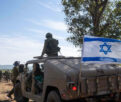 NewsTop Story
What Would “Total Victory” Mean in Gaza?
NewsTop Story
What Would “Total Victory” Mean in Gaza?
-
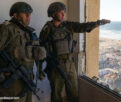 CommentariesTop Story
The Occupation of Territory in War
CommentariesTop Story
The Occupation of Territory in War
-
 CommentariesTop Story
Pakistan: Infighting in ruling elite intensifies following shock election result
CommentariesTop Story
Pakistan: Infighting in ruling elite intensifies following shock election result
-
 CommentariesTop Story
Proforma Polls in Pakistan Today
CommentariesTop Story
Proforma Polls in Pakistan Today
-
 CommentariesTop Story
Global South Dithering Away from BRI
CommentariesTop Story
Global South Dithering Away from BRI
-
 News
Meherabad beckons….
News
Meherabad beckons….
-
 CommentariesTop Story
Hong Kong court liquidates failed Chinese property giant
CommentariesTop Story
Hong Kong court liquidates failed Chinese property giant
-
 CommentariesTop Story
China’s stock market fall sounds alarm bells
CommentariesTop Story
China’s stock market fall sounds alarm bells
-
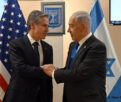 Commentaries
Middle East: Opportunity for the US
Commentaries
Middle East: Opportunity for the US
-
 Commentaries
India – Maldives Relations Nosedive
Commentaries
India – Maldives Relations Nosedive
-
AdSense code


